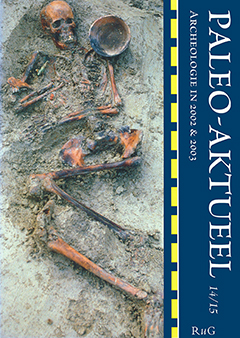Maalstenen bij de Dogon (Mali)
Samenvatting
The use of several types of saddle querns in an ethnological context is decribed, to arrive at a better interpretation of similar querns found in archaeological contexts. Data were sampled 25 years ago among the Dogon in Mali. Using surface size and the width/length ratio, some statistically significant differences could be distinguished that enable a tentative determination of the querns’ function (see table 1). The average number of grinding stones related to food preparation of 2.3 per courtyard (feeding 12.5 persons) agrees with ethnographic literature. Saddle querns are often recycled for other purposes after losing their initial function. A sequence of different uses is suggested, since the grinding of flour demands a larger surface than pounding herbs or mixing potter’s clay. Eventually most stones end up as a fountain for poultry or as building materials. In an archaeological context querns that are found in small groups with ample working space around, and accompanied by their rubbers/pounders, can be interpreted as stones that were still in active use, and the areas where they are found as female activity areas.

